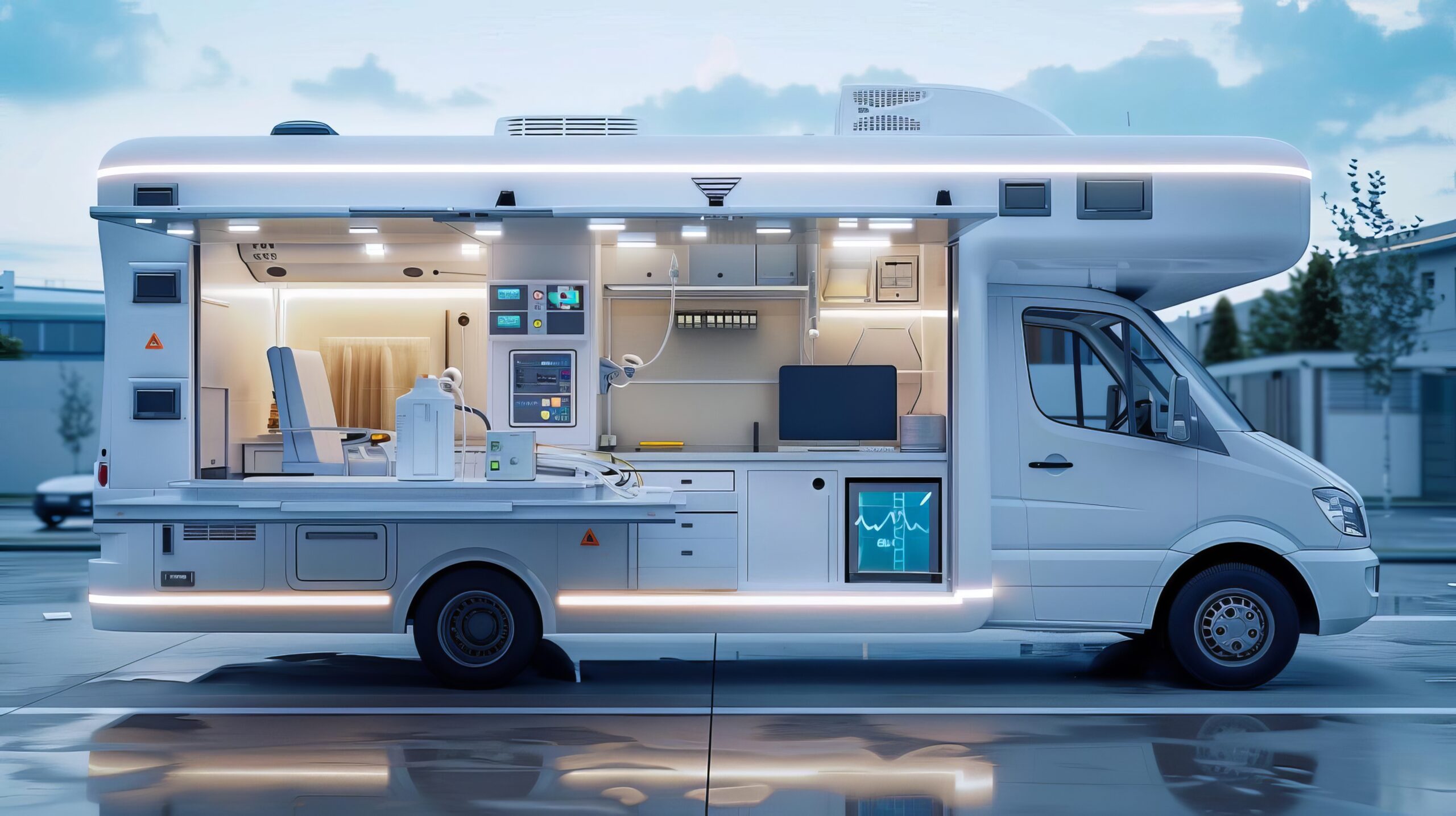Access to quality healthcare is a fundamental human right, yet for many individuals living in remote or underserved communities, it remains out of reach. Geographic isolation, limited healthcare infrastructure, and economic barriers create significant obstacles to receiving timely medical care. As a healthcare leader, I have witnessed firsthand how innovative solutions can bridge these gaps and bring vital services directly to the people who need them most. One of the most promising solutions is the use of mobile health clinics.
Meeting People Where They Are
Mobile health clinics are designed to bring healthcare services directly into communities that face barriers to traditional healthcare facilities. These clinics operate from specially equipped vehicles, offering primary care, preventive services, screenings, and even specialty care. They serve rural areas, urban neighborhoods with limited resources, and populations impacted by natural disasters or public health crises.
What makes mobile health clinics so effective is their ability to meet people where they are. For many in rural communities, the nearest hospital or doctor’s office can be hours away. Without reliable transportation, these individuals often delay or forgo care altogether. Mobile clinics eliminate this barrier by traveling into these communities and providing care at local gathering places like schools, churches, and community centers. This proactive approach ensures that care is accessible, timely, and consistent.
Addressing Preventive and Chronic Care Needs
Preventive care is often one of the first services to be neglected when healthcare access is limited. Routine check-ups, immunizations, cancer screenings, and health education are crucial to identifying health risks early and preventing more serious conditions. Mobile clinics are uniquely positioned to offer these services conveniently within communities.
Additionally, mobile health units play a crucial role in managing chronic diseases like diabetes, hypertension, and asthma. By providing regular check-ups, medication management, and health counseling, these clinics empower patients to take control of their health. This ongoing support helps reduce hospital readmissions and improves overall quality of life.
Reaching Vulnerable Populations
Mobile health clinics are particularly effective in serving vulnerable populations, including the uninsured, underinsured, elderly, migrant workers, and individuals experiencing homelessness. These groups often face stigma and financial constraints that prevent them from seeking care. Mobile units offer a welcoming and non-judgmental environment where patients feel safe receiving care.
For example, during the COVID-19 pandemic, mobile clinics became critical for delivering testing, vaccinations, and public health education. They allowed healthcare workers to reach high-risk populations quickly and efficiently, reducing the spread of the virus and saving lives. This adaptability demonstrates how mobile health solutions can respond to emerging public health threats while continuing to serve routine healthcare needs.
Integrating Technology for Better Outcomes
Technology is transforming the way mobile health clinics operate. With the integration of telemedicine, electronic health records (EHRs), and remote monitoring devices, mobile clinics can offer comprehensive and coordinated care. Patients can connect with specialists via telehealth, access follow-up care, and have their health data securely shared with primary care providers.
This technological integration ensures continuity of care, which is essential for managing long-term health conditions. It also allows mobile units to operate more efficiently, reducing wait times and improving the overall patient experience. Leveraging technology not only enhances the quality of care but also expands the reach and capacity of mobile health programs.
Overcoming Challenges in Mobile Healthcare
While mobile health clinics offer incredible benefits, they are not without challenges. Funding and sustainability remain significant hurdles. Operating a mobile clinic requires investments in vehicles, medical equipment, staffing, and ongoing maintenance. Securing consistent funding through grants, partnerships, and community support is essential for long-term success.
Additionally, staffing mobile clinics with qualified healthcare professionals can be difficult, especially in regions already facing workforce shortages. Collaborating with local healthcare providers, academic institutions, and volunteer organizations can help fill these gaps and ensure that mobile units are adequately staffed.
Regulatory and logistical barriers also exist, such as navigating licensing requirements across different regions and managing supply chains for medical equipment and medications. Addressing these challenges requires strategic planning, policy advocacy, and community partnerships to create sustainable and scalable models.
Building Community Trust
One of the most critical factors in the success of mobile health clinics is building trust within the communities they serve. People are more likely to seek care when they feel respected, understood, and supported. This requires culturally competent care, effective communication, and consistent engagement.
Listening to community needs and involving local leaders in planning and implementation fosters trust and ensures that services are relevant and effective. Healthcare is not one-size-fits-all, and mobile clinics must adapt to the unique needs of each community they serve.
Looking Ahead: Expanding Impact
The potential for mobile health clinics to transform healthcare access is immense. As healthcare leaders, we must continue to invest in and expand these programs to reach even more communities. This includes advocating for policy changes that support mobile health initiatives, forming partnerships with private and public organizations, and integrating innovative technologies.
Mobile clinics are more than just medical units on wheels—they are a lifeline for countless individuals who would otherwise go without care. By continuing to innovate and prioritize accessibility, we can close the healthcare gap and build healthier, more resilient communities.
Healthcare delivery must evolve to meet people where they are, both physically and emotionally. Mobile health clinics embody this philosophy by breaking down barriers and bringing compassionate, high-quality care to the heart of underserved communities. It is through initiatives like these that we can create a more equitable and inclusive healthcare system for all.


